BLIGHT UNSEEN:
Microplastics in the Pacific Rim
Salmon Steward: Winter 2021
Since 2017, the Ucluelet Aquarium has rallied citizen scientist volunteers in a project aimed to better understand the distribution of microplastics across beaches in the Pacific Rim.
Through monthly surveys, they’ve collected 1,150 ml of microplastics on Wickaninnish Beach. That’s the equivalent of approximately 1,500 basketballs.
Microplastics are tiny 1 ml-5 ml fragments of plastic that can severely harm the local ecosystem, acting as pollutants within the food web that endanger wildlife in marine environments. These particles can be mistaken for food, resembling eggs or other small marine organisms that salmon consume. Once ingested, they may cause a false sensation of being full and can starve the animal.
“Microplastics are a real danger to salmon, the species that support them, as well as their habitats,” says Laura Griffith- Cochrane, curator of Ucluelet Aquarium.
She adds that microplastics can also interrupt the life cycles of important prey species that salmon eat.
“It’s vitally important for salmon to eat nutritious food that will allow them to put on muscle, fat, and store energy for their future offspring. If they’re eating plastic particles instead, they’re not going to succeed, and neither will their future fry,” Griffith-Cochrane explains.
(Photo) Sophie Vanderbanck, marine debris coordinator and biologist with the Ucluelet Aquarium, conducts a microplastic survey in Wickaninnish Beach in Tofino.
The Pacific Salmon Foundation’s Community Salmon Program, with funding from Return-It, supports this project, enabling continued engagement with citizen scientist volunteers’ sampling efforts. The monthly collection and analysis of microplastics has identified potential patterns of debris on this section of the coast, such as higher volumes in the winter months, when the tides are higher and ocean currents are stronger.
The trends are helping the team understand what types of microplastics are most commonly present, how seasonality affects the amount of plastic washing up on shore, and the optimal time for beach clean-ups to remove microplastic debris.
This study was the first of its kind, and as a citizen science project, has not only been able to find valuable data but has engaged and educated hundreds of people along the way.
Griffith-Cochrane and her team hope that their research, public engagement, and raising awareness of the negative impacts of marine pollution will help create positive changes for our shared environment.
“Salmon aren’t just vital to the ecology of our home lands and waters, they’re a keystone species of our culture and economy,” she says. “It is important that we tackle marine microplastic pollution, because we are all connected to it.”
HOW CAN I HELP?
START SMALL. Choose one item, such as a reusable shopping bag or a reusable “to go” coffee cup, and make the switch to support sustainable, plastic-free habits. Once you’ve succeeded, move on to another item.


